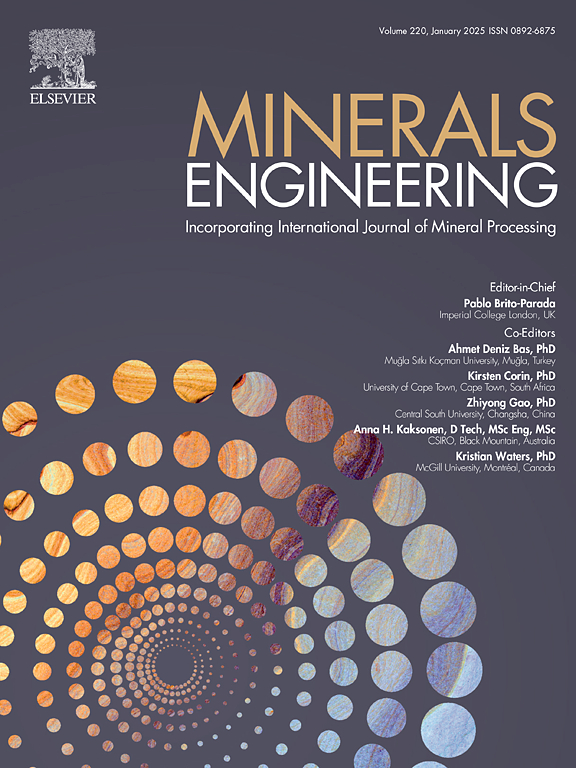A green extraction process of lithium from clays
IF 4.9
2区 工程技术
Q1 ENGINEERING, CHEMICAL
引用次数: 0
Abstract
One of the possibilities for mitigating global climate change is to replace the burning of hydrocarbons with cleaner wind and solar energies, but the problem is storing the energy efficiently. To solve this problem, one of the most promising alternatives is the use of rechargeable and efficient lithium batteries. The importance of this work is that a green method to extract lithium from clays (the third major source of this element) is demonstrated at a laboratory scale. This is done through an electrodialysis process, placing the clay slurry in the anodic section and water in the cathodic section. In this work, the effect of temperature and percentage of solids of the slurry on the lithium extraction kinetics is studied and it is found that the temperature favours the extraction kinetics, but the solids percentage affects it negatively. The extraction of lithium from clay-type carbonates is feasible under the following initial operating conditions: temperature close to 25 °C, solids content at 10 % (weight/weight, w/w) and natural pH of the clay slurry (pHnatural 10, approximately). The small particle size and high surface charge of clays makes them very difficult to separate from water (by filtration or sedimentation) but this method allowed settling of the processed clays.
求助全文
约1分钟内获得全文
求助全文
来源期刊

Minerals Engineering
工程技术-工程:化工
CiteScore
8.70
自引率
18.80%
发文量
519
审稿时长
81 days
期刊介绍:
The purpose of the journal is to provide for the rapid publication of topical papers featuring the latest developments in the allied fields of mineral processing and extractive metallurgy. Its wide ranging coverage of research and practical (operating) topics includes physical separation methods, such as comminution, flotation concentration and dewatering, chemical methods such as bio-, hydro-, and electro-metallurgy, analytical techniques, process control, simulation and instrumentation, and mineralogical aspects of processing. Environmental issues, particularly those pertaining to sustainable development, will also be strongly covered.
 求助内容:
求助内容: 应助结果提醒方式:
应助结果提醒方式:


